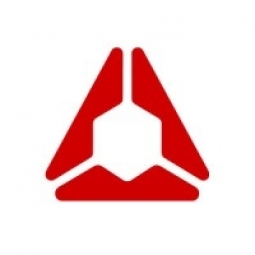技术
- 网络与连接 - 全球导航卫星系统 (GNSS)
- 传感器 - 全球定位系统
适用行业
- 航天
- 电信
适用功能
- 采购
- 产品研发
用例
- 行为与情绪追踪
- 租赁金融自动化
关于客户
本案例研究的客户是美国宇航局(NASA),即美国的民用太空计划。 NASA 是太空探索领域的全球领导者,与美国承包商、学术界、国际和商业伙伴合作,发现和扩展知识,造福人类。 NASA 于 2017 年启动了商业小卫星数据采集 (CSDA) 计划,旨在识别、评估和获取商业数据集,以支持其地球科学研究和应用目标。该计划还旨在建立连续和可重复的流程,以引入新的商业数据供应商,实现购买数据的持续使用,建立数据管理系统和流程,并与其他美国政府机构和国际合作伙伴协调评估和科学使用数据商业数据。
挑战
美国宇航局(NASA)是美国的民用太空计划,是太空探索领域的全球领导者。它与美国承包商、学者、国际和商业伙伴合作,扩展知识,造福人类。美国宇航局面临的重大挑战之一是支持气候研究和地球科学。 2017年,美国宇航局与私营部门小星座卫星数据产品试点项目启动了商业小卫星数据采集(CSDA)计划。该计划旨在识别、评估和获取商业数据集,以支持 NASA 的地球科学研究和应用目标。然而,面临的挑战是建立连续且可重复的流程,引入新的商业数据供应商,实现购买数据的持续使用,建立数据管理系统和流程,并与其他美国政府机构和国际合作伙伴协调评估和科学使用的商业数据。
解决方案
2020 年 3 月,NASA 授予 Spire 一份 CSDA 计划合同,以提供符合该计划战略目标的地球观测数据。 Spire 专注于提供全面的地球观测数据,并不断开发和扩展其产品。这些数据涵盖极端天气事件、气候变化趋势以及土壤湿度和海冰等地表数据。 2021 年 4 月,NASA 根据任务令 (TO) 6 续签了 Spire 的 CSDA 计划合同。此次续签使 NASA 和美国政府资助的研究人员更容易获取 Spire 独特的天气、气候和空间天气数据。 Spire 在近地轨道 (LEO) 运行一个星座,每天收集超过 10,000 个射电掩星 (RO),覆盖全球范围一致。 Spire 的 RO 数据由 NASA 在 CSDA 计划的 SmallSat Data Explorer (SDX) 数据库下存档和维护。
运营影响
数量效益

Case Study missing?
Start adding your own!
Register with your work email and create a new case study profile for your business.
相关案例.

Case Study
Airbus Soars with Wearable Technology
Building an Airbus aircraft involves complex manufacturing processes consisting of thousands of moving parts. Speed and accuracy are critical to business and competitive advantage. Improvements in both would have high impact on Airbus’ bottom line. Airbus wanted to help operators reduce the complexity of assembling cabin seats and decrease the time required to complete this task.

Case Study
Aircraft Predictive Maintenance and Workflow Optimization
First, aircraft manufacturer have trouble monitoring the health of aircraft systems with health prognostics and deliver predictive maintenance insights. Second, aircraft manufacturer wants a solution that can provide an in-context advisory and align job assignments to match technician experience and expertise.

Case Study
Aerospace & Defense Case Study Airbus
For the development of its new wide-body aircraft, Airbus needed to ensure quality and consistency across all internal and external stakeholders. Airbus had many challenges including a very aggressive development schedule and the need to ramp up production quickly to satisfy their delivery commitments. The lack of communication extended design time and introduced errors that drove up costs.

Case Study
Developing Smart Tools for the Airbus Factory
Manufacturing and assembly of aircraft, which involves tens of thousands of steps that must be followed by the operators, and a single mistake in the process could cost hundreds of thousands of dollars to fix, makes the room for error very small.

Case Study
Accelerate Production for Spirit AeroSystems
The manufacture and assembly of massive fuselage assemblies and other large structures generates a river of data. In fact, the bill of materials for a single fuselage alone can be millions of rows of data. In-house production processes and testing, as well as other manufacturers and customers created data flows that overwhelmed previous processes and information systems. Spirit’s customer base had grown substantially since their 2005 divestiture from Boeing, resulting in a $41 billion backlog of orders to fill. To address this backlog, meet increased customer demands and minimize additional capital investment, the company needed a way to improve throughput in the existing operational footprint. Spirit had a requirement from customers to increase fuselage production by 30%. To accomplish this goal, Spirit needed real-time information on its value chain and workflow. However, the two terabytes of data being pulled from their SAP ECC was unmanageable and overloaded their business warehouse. It had become time-consuming and difficult to pull aggregate data, disaggregate it for the needed information and then reassemble to create a report. During the 6-8 hours it took to build a report, another work shift (they run three per day) would have already taken place, thus the report content was out-of-date before it was ever delivered. As a result, supervisors often had to rely on manual efforts to provide charts, reports and analysis.




